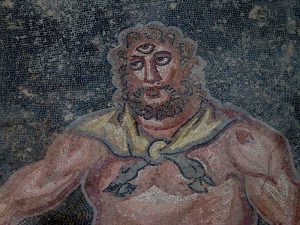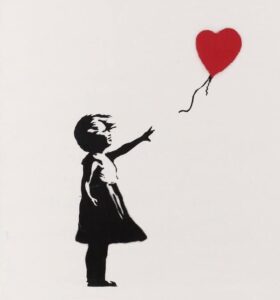Pain and suffering according to the Buddha
9 min read
I am not a Buddhist, but I must admit that the age-old wisdom of this philosophy has fascinated me from the first moment I came across it. After all, how could it be otherwise? The Buddha’s mission was to give an answer to those questions that have always distressed human beings: why are we destined to die? Why does illness exist? Why do we grow old? What the Buddha found at the end of his wanderings was very simple: suffering and death are part of human life, for the simple reason that everything in this universe has a beginning and an end. Everything is temporary. Confronted with this truth, our lives appear to us as dead-end, suffocating. Perhaps we would see them as a condemnation inflicted on us by a sadistic demiurge, forcing us to remain “in this valley of tears” for an unspecified amount of time, always on the edge of what life might have in store for us in the meantime. Then we would be reminded of Schopenhauer’s words – “(…) the shortness of life, so often bemoaned, might perhaps be what life has in store” – and we would all agree with him.
But the Buddha, fortunately, went further and gave us the light that can illuminate our lives: if pain is inevitable, as we said, as part of life, suffering is not.
I imagine that this statement will cause a little confusion, as we tend to use the two terms almost synonymously.
Therefore, the question arises: in the Buddha’s thinking, what is the difference between pain and suffering?
The term used in traditional Pali language texts is “dukkha”. If we were to stop at a literal translation of the term, as is often the case, we would be back to square one, as dukkha can be translated as either “pain” or “suffering”.
To address this question, we need to go a little deeper, to rediscover the meaning that was attributed to this term in its original context. Dukkha, in the Pali language, has the generic meaning of “unpleasant”, as opposed to another Pali word, “sukha”, which has the meaning of “pleasant”. Roughly speaking, the two words differ in the prefix: “su-”, translated as “good, conducive to well-being”; and the prefix “du-”, translated as “bad, difficult and prone to illness or evil”.
Thus, dukkha indicates the unpleasant sensation we experience both in relation to the physical pain produced, for example, by a bad fall from a horse, and to more subtle feelings such as dissatisfaction or melancholy.
That said, one can understand why the Buddha took care to make a distinction between three different types of dukkha, raging in our lives.
We experience the main one, of course, when the pain manifests itself on a physical level and has been produced by a physical cause (in truth, the cause can also be mental, but the unpleasant sensation we experience in this case is predominantly on a physical level). An example is the case of the backache that occurs after tidying up the cellar at home.
The second type of dukkha is produced exclusively by our mental activity, and is related to change. The Pali term is ” viparinama-dukkha”, which means, precisely, the “suffering of change”. That is, that unpleasant feeling we experience when we feel the fleeting nature of the world around us, when, for example, we wish a nice evening with friends would never end, or that our children would always remain children. For those who do not know, there is a famous Italian song by Righeira brothers released in summer 1985, whose title is “L’estate sta finendo” (Summer is ending) and it goes: “Summer is ending – another year has gone – I’m getting older – you know I don’t want to”. This is exactly what the second type of dukkha is about.
The last type of dukkha, for the Buddha, takes on more of an existential significance. In the Pali language texts it is referred to as ” sankhara-dukkha”, which we could translate as “suffering from conditioned reality”. It is that feeling of dissatisfaction that accompanies man throughout his existence, due to the fact that life imposes “conditions” on us over which we have no control, such as, for example, the fact that in order to survive we have to eat, shelter ourselves from the cold, that we will grow old, that we will fall ill and eventually die. It represents that feeling of dissatisfaction that would lead the writer Malraux to say: ” A man can rarely adapt to his condition as a man (…)”.
Having made this long and dutiful clarification (although, I imagine, we have cleared our minds a little), we are still in the position of not having answered the initial question: what is the difference between pain and suffering?
Let us come to the point. I will have someone, who knows a lot more about the subject than I do, answer:
“Pain may be inevitable, but whether you suffer or not is up to you. Suffering is a choice, you choose whether to suffer or not. Birth, old age and illness are natural. You cannot suffer because of them, when you have chosen to accept them as part of life. You can choose not to suffer even though there is pain or illness.
How you see life and your particular situation depends on how you look at it.”
(Thich Nhat Hanh)
Here is the Buddha’s answer. Suffering arises from resisting, from reacting to the pain that life brings, with the result that we add pain to pain.
Suffering is born in the mind.
To shed even more light on the subject, I quote in full the text of the famous parable of the two arrows (Sallena Sutta), where, according to tradition, the Buddha explained this concept to his disciples:
“When touched with a feeling of pain, the uninstructed run-of-the-mill person sorrows, grieves, and laments, beats his breast, becomes distraught. So he feels two pains, physical and mental.
Just as if they were to shoot a man with an arrow and, right afterward, were to shoot him with another one, so that he would feel the pains of two arrows, in the same way, when touched with a feeling of pain, the uninstructed run-of-the-mill person sorrows, grieves, and laments, beats his breast, becomes distraught. So he feels two pains, physical and mental.
As he is touched by that painful feeling, he is resistant. Any resistance-obsession with regard to that painful feeling obsesses him. Touched by that painful feeling, he delights in sensuality. Why is that? Because the uninstructed run-of-the-mill person does not discern any escape from painful feeling aside from sensuality. As he is delighting in sensuality, any passion-obsession with regard to that feeling of pleasure obsesses him. He does not discern, as it has come to be, the origination, passing away, allure, drawback, or escape from that feeling. As he does not discern the origination, passing away, allure, drawback, or escape from that feeling, then any ignorance-obsession with regard to that feeling of neither-pleasure-nor-pain obsesses him.
Sensing a feeling of pleasure, he senses it as though joined with it. Sensing a feeling of pain, he senses it as though joined with it. Sensing a feeling of neither-pleasure-nor-pain, he senses it as though joined with it.
This is called an uninstructed run-of-the-mill person joined with birth, aging, and death; with sorrows, lamentations, pains, distresses, & despairs. He is joined, I tell you, with suffering and stress.
“Now, the well-instructed disciple of the noble ones, when touched with a feeling of pain, does not sorrow, grieve, or lament, does not beat his breast or become distraught. So he feels one pain: physical, but not mental. Just as if they were to shoot a man with an arrow and, right afterward, did not shoot him with another one, so that he would feel the pain of only one arrow, in the same way, when touched with a feeling of pain, the well-instructed disciple of the noble ones does not sorrow, grieve, or lament, does not beat his breast or become distraught. He feels one pain: physical, but not mental.
“As he is touched by that painful feeling, he is not resistant. No resistance-obsession with regard to that painful feeling obsesses him. Touched by that painful feeling, he does not delight in sensuality. Why is that? Because the well-instructed disciple of the noble ones discerns an escape from painful feeling aside from sensuality. As he is not delighting in sensuality, no passion-obsession with regard to that feeling of pleasure obsesses him. He discerns, as it has come to be, the origination, passing away, allure, drawback, and escape from that feeling. As he discerns the origination, passing away, allure, drawback, and escape from that feeling, no ignorance-obsession with regard to that feeling of neither-pleasure-nor-pain obsesses him.
“Sensing a feeling of pleasure, he senses it disjoined from it. Sensing a feeling of pain, he senses it disjoined from it. Sensing a feeling of neither-pleasure-nor-pain, he senses it disjoined from it. This is called a well-instructed disciple of the noble ones disjoined from birth, aging, & death; from sorrows, lamentations, pains, distresses, and despairs. He is disjoined, I tell you, from suffering and stress.
This is the difference, this the distinction, this the distinguishing factor between the well-instructed disciple of the noble ones and the uninstructed run-of-the-mill person.“
The mind is wonderful: it can lift us to celestial heights or plunge us into tremendous abysses. The Buddha’s philosophy has taught this for thousands of years.
I share the idea that the mind is like a muscle, and that it is up to us to train it, to develop its strength or flexibility, precision or speed of execution.
What the Buddha taught me is that whenever I suffer for any reason, I suffer for my own choice.
I conclude with another Buddha’s word of wisdom: the parable of the mustard seed.
“Shortly after the wedding, a woman named Kisa Gotami had a son, but he fell ill and within a few days died. In unbearable pain, the woman wandered for days with the corpse in her arms from village to village in search of help. No one could relieve her suffering, until one day a village elder advised her to go to the Buddha; the elder told her that if ever there was someone in the world who could restore life to a dead person, that person could be none other than him.
Kisa Gotami immediately set off towards the abode of the enlightened one. Finally standing before him, she begged him to accept her prayers and to bring back to life that much desired son.
The Buddha looked at her and said, “Know that I know a way to bring your son back to life.”
The woman, seized with irrepressible joy, said she was willing to do anything to get her son back.
Then the Buddha continued: “If so, find me what I need. You must bring me a mustard seed. But not just any mustard seed. You must get it from someone in whose house a family member has never been missing. Bring me this seed and I promise you that I will bring your son back to life.”
Kisa Gotami immediately set out in search of what the Buddha had requested, but soon, as she toured all the villages in the area, she realised that her search would not be an easy one. At the first house she found, a man said he was willing to give her a mustard seed, but he also told her that his grandmother had died in that same house. The same story was repeated from house to house, from village to village. Everyone had lost someone in the course of their lives.
The woman then began to perceive her own grief in a different way. She understood that death affects every being and that grief unites us as living beings.
This understanding allowed her to stop and lay her child’s corpse down. She then returned to the Buddha, who asked her: “Did you get me the mustard seeds?”.
The woman, with a serene spirit answered him: “The people of the village told me: the living are few, but the dead are many”.
The Buddha then told her: “Did you think you were the only one to have lost a son?
Source text: Il dolore e la sofferenza secondo il Buddha by Gianluca Montagnoni
Parable of the Two arrows: https://www.dhammatalks.org/suttas/SN/SN36_6.html
Mi chiamo Giorgia Padovani e sono appassionata di lingue straniere da sempre. Nel corso degli anni ho studiato diverse lingue, arrivando a conseguire una laurea magistrale in interpretariato e traduzione con inglese e russo. Sono curiosa di natura e penso che ogni occasione sia buona per imparare qualcosa di nuovo. Ho vissuto le esperienze migliori della mia vita all’estero, prima in Cile e poi a Londra. Credo fortemente che il mondo sia troppo grande e vario per rimanere sempre e solo in un posto. Per questo mi definisco radicata, ma con lo sguardo rivolto al mondo. Tra le mie passioni, oltre ai viaggi, ci sono la lettura, la fotografia, il cinema e i musical







